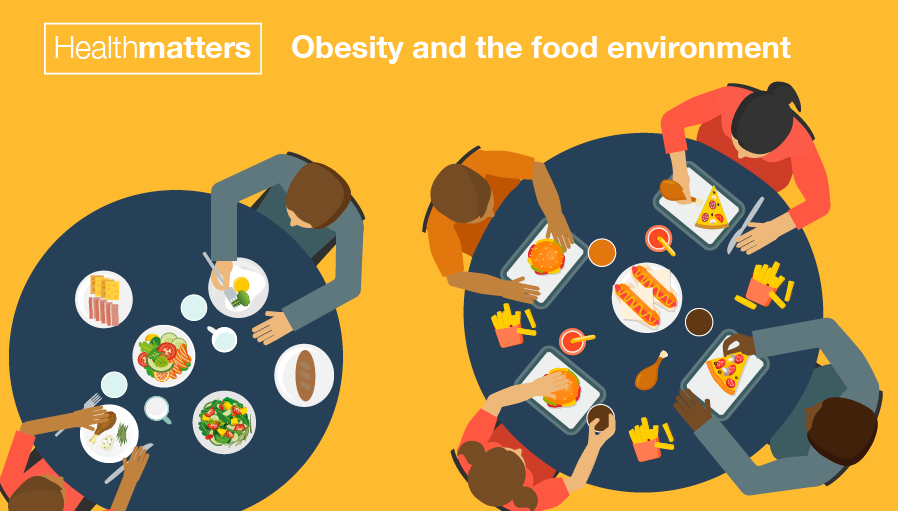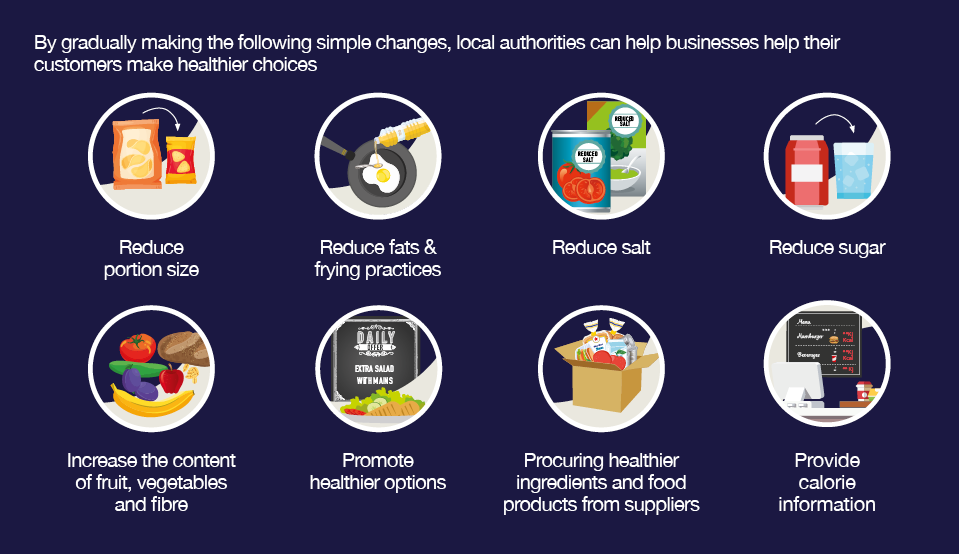The latest edition of Health Matters outlines how councils can work with small food businesses to help tackle the causes of obesity by creating a healthier food environment.
The eating out of home food sector, which includes restaurants, takeaways and fast-food outlets, accounts for a large amount of the food we eat.
More than a quarter of adults and one fifth of children eat food from outlets such as cafes, takeaways or restaurants at least once a week.
One response of many local authorities has been to limit the number of food outlets near schools. In 2009, planners in the London Borough of Waltham Forest decided to refuse planning permission to any new hot food takeaway located within a 400m radius of a school, youth facility or park. In the first year they refused five new applications.
Whilst restricting choice through such measures can be effective, supporting existing outlets to encourage healthier eating is also crucial to tackling the obesity epidemic.
One approach to achieving this is to use behavioural insights to nudge consumers in the direction of healthier choices.
Behavioural insights seek to implement low intensity, elegant ideas which can often deliver disproportionately large benefits.
Councils looking to adopt healthier catering policies should consider interventions that make healthy behaviour change Easy, Attractive, Social and Timely.
Developed by the Behavioural Insights Team, the EAST framework is a simple way to apply behavioural insights to a proposed intervention.
So how can the EAST framework be applied to encourage behaviour change strategies in catering outlets?
Make it EASY
Two clear insights from behavioural science is that our intentions and behaviours do not always align and small details that make a task more effortful can significantly decrease the probability of engaging in a behaviour.
For these reasons the first principle of the EAST framework is to make the desired behaviour easy. Small food businesses can help make healthier eating easier by:
Harnessing defaults
We have a tendency to stick with the status quo or the pre-set option. For this reason ensuring the healthiest option is the default option is a powerful tool for changing consumption behaviour. The healthier default, for example, could be offering a food item like a default side-salad instead of chips, or it could be a default portion size, like a small coffee as the default rather than a large size.
Decreasing the ‘hassle factor’
We can be deterred from a behaviour by seemingly small barriers. Decreasing the hassle factor by, for example, placing healthier drinks at the front of the fridge and sugar sweetened beverages at the back may prompt people to select the healthier option.
Utilising substitution
It is easier for us to substitute a similar behaviour than to eliminate an entrenched one. For this reason, reformulation of products (such as cooking food in rapeseed oil, making fatter chips or using low-fat spread) allows customers to engage in similar behaviours (still buying chips) but for the behaviour to be healthier.
Make it ATTRACTIVE
Whether it’s the discount offers in a shop, or the promise of money off on your next purchase, we have all bought things because they were made more attractive to us. Small food businesses can adopt this approach and make the healthier option attractive to customers by:
Positioning healthiest products first
The positioning of a product - what comes before or after it - influences how it is perceived and the likeliness of it being selected. Putting the healthy item first in a canteen can prompt customers to fill up their plates will healthier items resulting in them choosing fewer unhealthy items and subsequently consuming a healthier meal. A similar principle applies to menus whereby, in many cases, items placed first on a menu are most likely to be selected.
Increasing the salience of the healthiest products
Our attention is drawn to what seems relevant to us. Increasing salience could involve, for example, placing the healthiest items in prominent positions (as customers walk in or by the till) or in prominent positions with displays (such as placing the healthiest soft drinks at eye level within display fridges). This could also include utilising prompts such as an arrow on the floor to guide people to the healthiest area of a store.
Offering incentives for healthier purchasing
This could include offering free healthier side dishes and require separate purchase of, or charge more for, unhealthy items. Or this could mean special deals on healthier menus and products with less salt, saturated fat, sugar and calories on menus, for example two for the price of one.
Make it SOCIAL
We care a lot about what others think and how they behave and use other people's behaviour as a cue for what's acceptable and desirable. Small food business can:
Use social norms messaging to encourage healthier choices
There is some evidence that using social norms messaging can increase sales of healthier items. Placing signs near healthier items, for example, “every day over 50 of our customers buy a salad” may encourage customers to select these items.
Make it TIMELY
We respond differently to prompts depending on when they occur. We are disproportionately more motivated by costs and benefits that take effect immediately than those delivered later. Unfortunately, this means that eating unhealthy but tasty food appeals to people as the benefits in terms of taste are up front but the costs to health are long term.
Although people are likely to make a healthier decision if asked to select food prior to entering small food businesses this blog has outlined some key moments to prompt customers; when given menus and at point of purchase to make the healthier choice.
Read this edition of Health Matters for more on the factors behind the rise in obesity rates and the actions that can be taken to address this.
Health Matters
Health Matters is a resource for professionals which brings together the latest data and evidence; makes the case for effective public health interventions and highlights tools and resources that can facilitate local or national action. Visit the Health Matters area of GOV.UK or sign up to receive the latest updates through our e-bulletin. If you found this blog helpful, please view other Health Matters blogs


